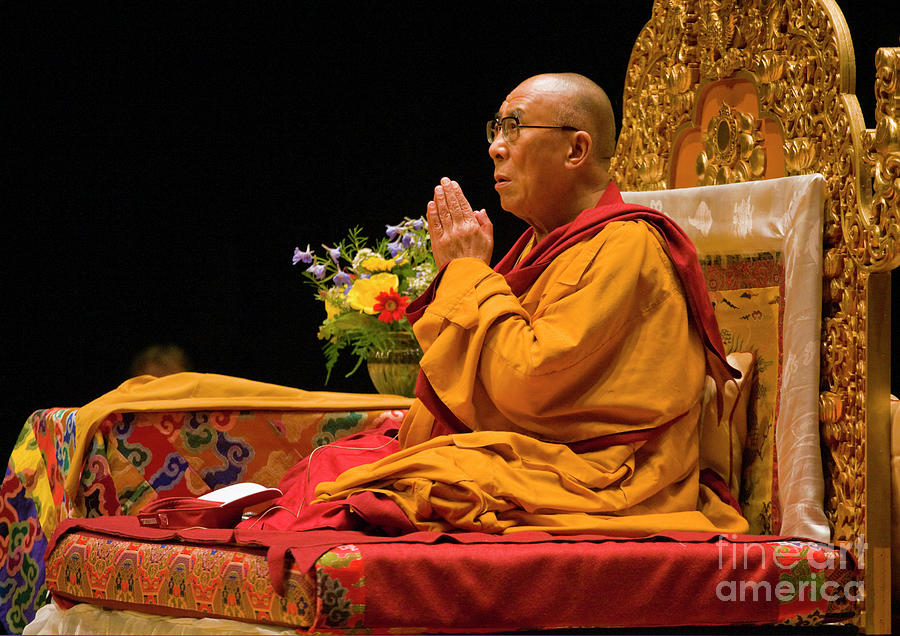

The most important statue is of Songtsen Gampo himself, to the left of the pillar. Passing the closed Chapel of Sakyamuni (Zegya Lhakhang), continue to the northwestern corner, where you’ll find a small corridor that leads to King Songtsen Gampo’s Meditation Chamber (Chogyal Drupuk), which, along with the Chapel of Arya Lokeshvara on the 3rd floor, is one of the oldest rooms in the Potala. There are also nine statues of Tsepame here, as well as green and white Drölma (Tara, a female bodhisattva). Murals by the right-hand window depict the construction of the Potala. The images of coracle rafts halfway up the wall add an intimate touch. In the Chapel of the Nine Buddhas of Longevity (Tsepak Lhakhang), look for the murals by the left-hand window if you can get a monk to lift the cloth – the left-hand side depicts Thangtong Gyalpo and his celebrated bridge (now destroyed) over the Yarlung Tsangpo near Chushul. It is noted for its stunning three-dimensional mandala, which is more than 6m in diameter and finely detailed with more than 170 statues.

The first of the chapels you come to on the 2nd floor is the Chapel of Kalachakra (Dukhor Lhakhang), also known as the Wheel of Time. The equally impressive tomb of the Ninth Dalai Lama was under renovation in 2018. Pilgrims are blessed here with the hat of the eighth Dalai Lama. The towering, jewel-encrusted tomb of the Eighth Dalai Lama dates from 1805 and is more than 9m tall. Relics include stone footprints of Guru Rinpoche and Tsongkhapa. The statue is accompanied on the left by the seventh Dalai Lama and Tsongkhapa, and on the right by the fifth, eighth and ninth Dalai Lamas. It is the most sacred of the Potala’s chapels, and the sandalwood image of Arya Lokeshvara inside is the most revered image housed in the Potala. It is said that this is one of the few corners of the Potala that dates from the time of Songtsen Gampo’s 7th-century palace. To the right stands a half-hidden statue of Kalsang Gyatso, the seventh Dalai Lama.Īlso in the northwestern corner, steps lead up into the small but important Chapel of Arya Lokeshvara (Phagpa Lhakhang). In the northwestern corner is the Lama Lhakhang and the golden tomb of the Seventh Dalai Lama (Serdung Tashi Obar Khang), constructed in 1757 and encased in half a tonne of gold. Next, the Chapel of Immortal Happiness (Chimey Dedan Kyil) was once the residence of the sixth Dalai Lama, Tsangyang Gyatso, whose throne remains it is now dedicated to Tsepame, the Buddha of Longevity, who sits by the window. The main statue in the corner is a golden thousand-armed Chenresig, while the main central thangka is of the Manchu Chinese emperor Qianlong dressed in monk’s robes, with accompanying inscriptions in Tibetan, Chinese, Mongolian and Manchurian. The Chapel of the Victory over the Three Worlds (Sasum Namgyal) houses a library and displays of Manchu texts. These are essentially three-dimensional versions of the mandalas you see painted on thangkas everywhere in Tibet and act as meditation maps for the mind. Next, the Chapel of Three-Dimensional Mandalas (Loilang Khang) houses spectacular jewel-encrusted 18th-century mandalas of the three principal yidam (Tantric deities) of the Gelugpa order. The chapel was damaged in a fire (caused by an electrical fault) in 1984 and many valuable thangkas (religious paintings) were lost. The walls are stacked with the collected works of Tsongkhapa (founder of the Gelugpa order) and the fifth Dalai Lama. To the left of the Jampa statue, in the corner, is a wooden Kalachakra mandala. On the 3rd floor, the first room is the Chapel of Jampa (Jamkhang), which contains an exquisite image of Jampa (Maitreya, or the Future Buddha) commissioned by the eighth Dalai Lama it stands opposite the eighth Dalai Lama’s throne. The gilded buddhas, intricate mandalas and towering funeral stupas you pass en route rank as the highlights of the Potala. You start the tour of the main Potala building from the top and descend through the bowels of the building to exit on the ground floor.


 0 kommentar(er)
0 kommentar(er)
